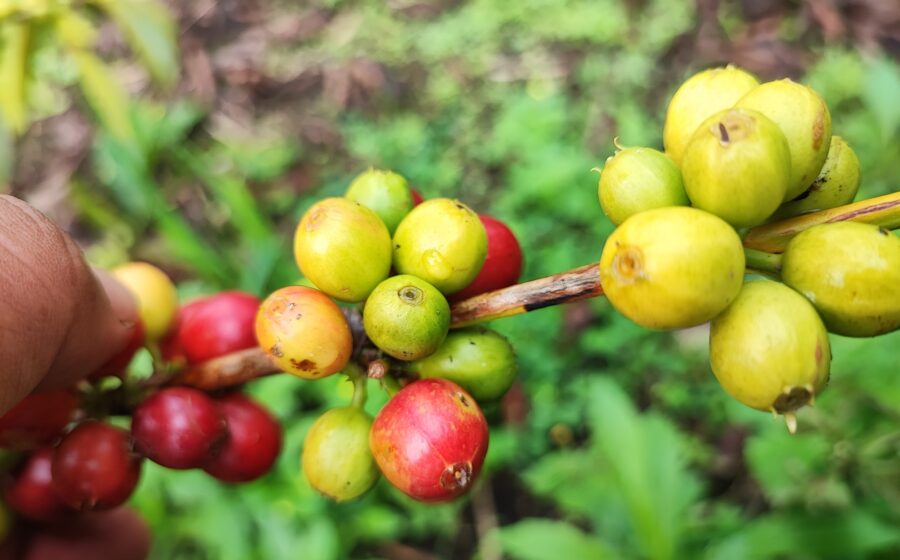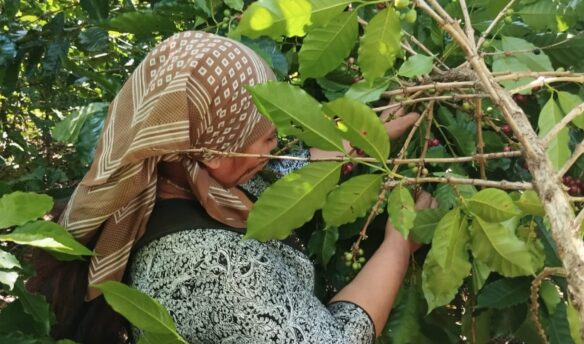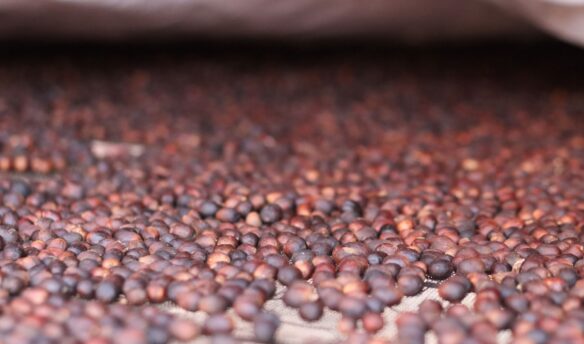Climate change is one of the biggest threats to our world today. Coffee is particularly vulnerable—fluctuations in temperature can alter production, impacting everything from when coffee cherries ripen to how they taste when roasted and brewed. A study published in 2015 predicts climate change could wipe out 55% of robusta plants and 56% of arabica plants by 2050.
Coffee, a plant that relies heavily on seasonal patterns and predictive weather, is heavily impacted by climate change but has been notably hard hit by drought over the last few years. Droughts pose a massive problem for coffee producers and could drastically reduce yields, especially in places not set up for irrigation where water is scarce and not set up for irrigation.
Farmers bear the brunt of the impact of drought, but the ramifications can be felt across the value chain, from price instabilities to decreased cup quality. Each year, coffee-producing regions battle extreme weather, and without drastic intervention and industry attention, dry spells spurred by climate change could continue to decimate farms.
Scant Rains and Rising Temperatures in India
This year, India had a hard, brutal summer: an extreme heatwave caused thousands to suffer from heatstroke and caused severe water shortages. Most coffee-growing regions around the country were hit by periods with little to no rain, and paired with unusually high temperatures, coffee cherries failed to blossom when anticipated.
“This year in April, we only had 6 centimeters of rain,” says Mayur Karanth, coffee producer at the Rampal Estate in India. “Unfortunately, we struggled to provide adequate irrigation in time to compensate.”

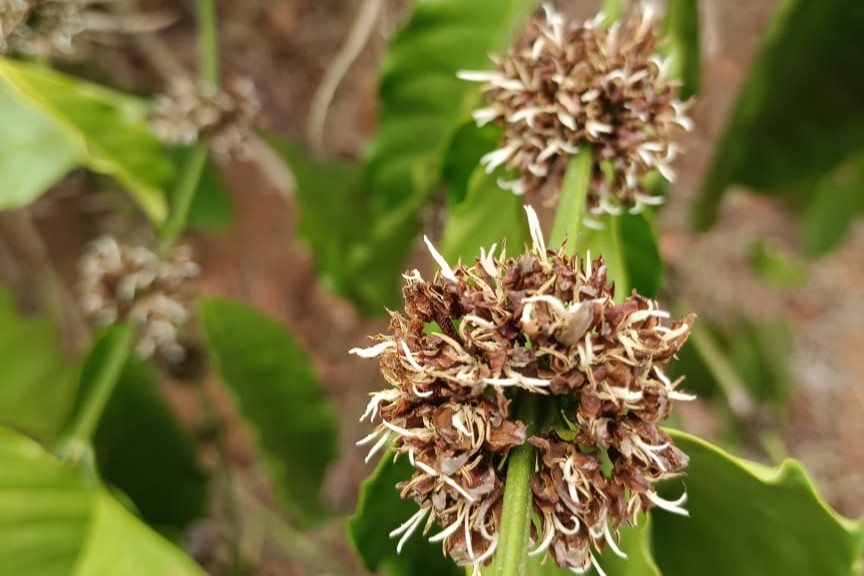
Karanth says that the lack of water wreaked havoc on the farm. “When plants go without sufficient water for as little as five days, they begin to shed their flowers. We are estimating close to 40% loss in our overall coffee yield in the upcoming harvest at the end of the year,” says Karanth.
Coffee plants usually need two rounds of rain to blossom and set fruit (backing): an initial rainy period causes flowers to bloom, and backing showers take place about 20 to 25 days post-blossom. When it doesn’t rain sufficiently or at all, the coffee blossoms won’t turn out properly or form incorrectly.
Rohan Kuriyan, a coffee producer at the Balanoor Plantations in India, says he was alarmed by the scorching hot season. “At a time when our usual temperatures would be about 30 to 33 degrees Celsius (between 86 to 91 degrees Fahrenheit), this year, it was 39 to 40 °C (102 to 104 °F). While it may not seem like much, it is severe for coffee,” he says.
The problems on Kuriyan’s farm were exacerbated by drought. “For coffee, you need rainfall at particular times for blossom and backing. But we got scattered spells of very little rain and then nothing, so the initial spikes (flower buds) came out but couldn’t progress further,” says Kuriyan.
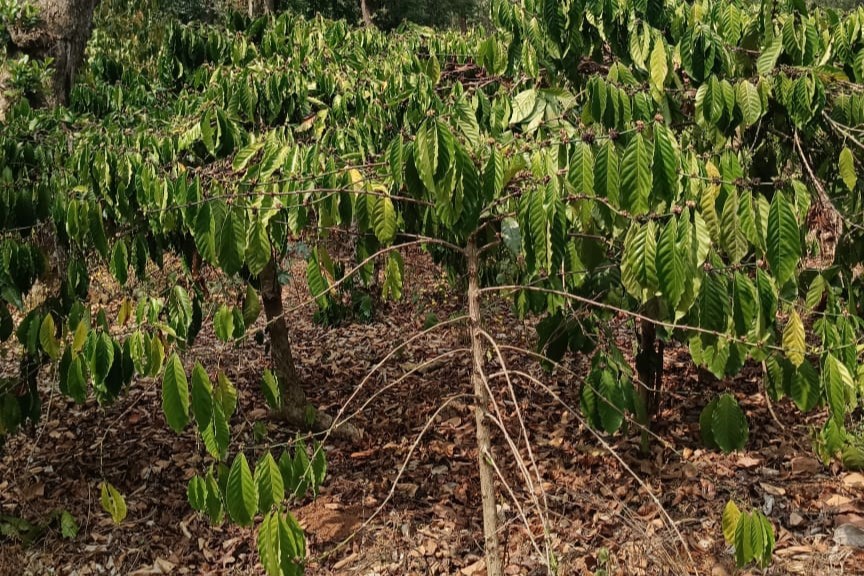
Both Kuriyan and Karanth are in the Chikmagalur region in the Western Ghats of Southern India, which saw one of the driest summers ever. The rivers ran dry, and finding water for daily consumption became challenging for many.
As a backup, producers often fall back on watering plants manually, pushing up costs but safeguarding against dry spells. Irrigation can be quite a considerable cost burden for producers. Pumping water from the groundwater reserves, nearby bodies of water, or ponds and reservoirs that farmers build on their land requires heavy-duty pumps, a lot of fuel, and extensive infrastructure. However, water was so scarce that irrigation was banned by the authorities.
The ban impacted all coffee growers, but farmers in lower altitudes who primarily grow robusta were particularly hurt. Robusta has shallower roots than arabica and generally needs more water. The dry season prevented robusta plants from getting the water they needed.
The Global Impact of Climate Change
Scant and untimely rain patterns and rising temperatures are not limited to India alone. Changing climate patterns are impacting coffee growers around the world.
“The weather has become very unpredictable,” says Dreyde Delgado, a coffee producer in Peru. “[This year], we had 10-15 days of sun, then two to three days of rain, then sun again. This resulted in multiple flowering stages.”
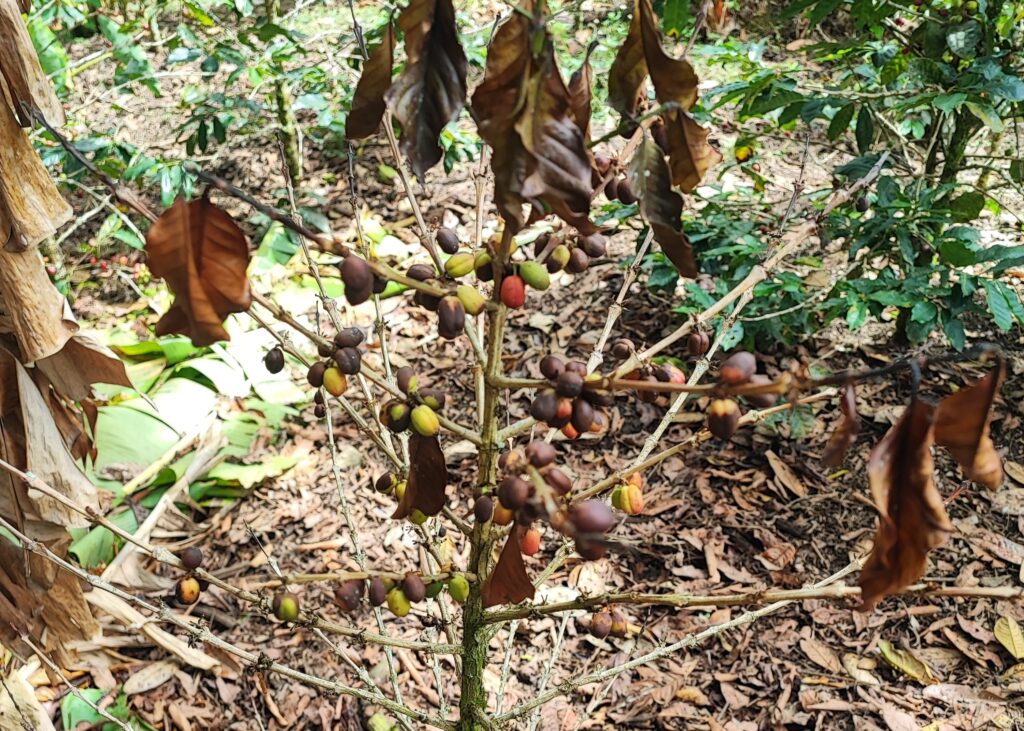
Flowering is the first stage in the growth of coffee cherries—when a plant flowers kicks off the cycle of cherry formation, and it’s critical for flowering to occur roughly around the same time or else cherries will ripen at wildly different times. “We normally see two flowering stages on the farm; now we have experienced four stages on some of the farms. The effect is greater in the lower zones (800 to 1400 meters above sea level),” says Delgado.
Rain is critical to kicking off the flowering cycle, and drought can delay flowering. “Dry periods are becoming longer; sometimes we go even three or four months without rain.”
Coffee plants don’t do well when exposed to extreme weather. “When the dry period becomes too long, the coffee plant will get stressed,” says Delgado. “As a survival strategy, the plant starts to speed up its maturation. The cherries will ripen sooner than when they should. These cherries are smaller, have less mucilage, the pulp sticks to the parchment, and tend to dry out before the cherry is even picked.”
Drought impacts the structure of coffee cherries, and the lack of rain also affects the flavor of the beans. To respond to the stress of drought and heat, a coffee plant employs adaptation mechanisms by inducing biochemical changes that decrease the hemicellulose and pectin in the cell walls, which in turn could alter the cup profile of the coffee beans produced.
“We find that in periods of low rainfall, the cherries have very little mucilage, and there is very little sweetness. This leads to a lesser development of flavor characteristics in the beans; sometimes they even turn out completely flat in flavor,” says Kuriyan.
But too much rain can also alter flavor. “In contrast, in periods of excessive rain, we find the mucilage to be very watered down and diluted, which again affects the flavor characteristics of the beans,” says Kuriyan.

Drought also significantly compromises soil health. Soil usually contains microbes that form symbiotic relationships with coffee plants, and soil needs moisture to flourish. “Nurturing this microbial ecosystem is essential for healthy coffee production,” says Karanth. “Dryness causes cracking in the soil, which could damage the delicate root hairs of the coffee plant, worsening the drought stress.”
Heat and lack of rain also make coffee plants especially vulnerable to diseases like coffee leaf rust (roya) and pests like the coffee berry borer and the white stem borer while reducing the effectiveness of natural enemies to pests, like certain fungi. “The plants are already weak due to the dry conditions and the heat stress, making them much more vulnerable to pests,” says Delgado.
“The incidence of pests has already gone up,” says Kuriyan. “The infestations per acre of the white stem borer have risen significantly. With each infestation we find, we have to cut and burn the plants. That adds up to our losses.”
The Way Forward
Coffee production is an endeavor that spans generations. Many producers have data from the growers that came before them, which could be the key to planning for the future and responding to the threat of drought.
“My dad has the rainfall records, expense records, and thorough data of yield per block, work logs, fertilizer, and input logs, and so much more from the past 50 years,” says Karanth. “Comparing this yearly data, we find areas of improvement and opportunities for course correction. Traditional wisdom often helps answer many current questions.”
An effective defense against climate events may lie in agroforestry. Shade-cropping coffee can help control the air temperature around the plants while also retaining more moisture in the soil. With the right trees, nutrients can be replenished in the soil, supporting the microbes needed to keep plants healthy.
Kuriyan says he’s working to preserve more water on the farm and investing in tanks and dams in case of further drought. “But the producers alone can only do so much,” he says. “It needs to be a collective action and not just something forced on the farmers who do the work and are the ones who then face irrigation bans when water becomes scarce.”
Drought affects everyone in the coffee value chain and is often not limited to one bad harvest. Climate change is leading to more dry spells, resulting in water scarcity and rising temperatures and impacting quality and production yields. But right now, farmers are bearing the brunt of the effects of drought, and without innovations and solutions that address these issues, cultivating coffee will become increasingly unsustainable.

